




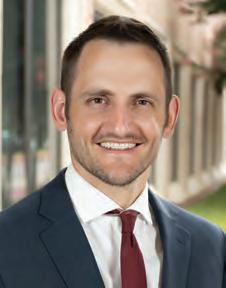







Justin M. Kane, MD, FAAOS ~ Foot and Ankle Orthopedic Surgeon
• Minimally invasive bunion and foot/ ankle surgeries
• Bunionplasty
• Total ankle replacement (TAR)
• 3D printed total talus
• Arthritis and deformity correction

• Hammertoe surgery
• Sports injuries
• Foot and ankle cartilage injuries
• Limb salvage surgery
• Foot and ankle fractures
• Limb lengthening
Vikas V. Patel, MD ~ Upper Extremity Orthopedic Surgeon
• All fractures
• Shoulder arthroscopy
• Rotator cuff repair
• Shoulder and elbow replacement
• Carpel tunnel syndrome
• Trigger finger
• Wrist and hand surgery
• Sports-related injuries
• Complex revision procedures of the upper extremity
Leroy Butler, DO, FAAOS ~ Foot and Ankle Orthopedic Surgeon
• Minimally invasive bunion and foot/ankle surgeries
• 4-D DynaBunion and Lapiplasty bunion correction
• Total ankle replacement (TAR)
• Arthritis and deformity correction
• Lateral ankle instability
• PARS Achilles repair
• Foot and ankle cartilage injuries
• Trauma
Christopher Kowalski, MD ~ Orthopedic Spine Surgeon
• Minimally invasive spine surgery
• Complex revision spine surgery
• Spinal deformity correction surgery
• Cervical disc replacement
• Anterior/posterior cervical fusion
• Posterior cervical foraminotomies
• Lumbar microdiscectomy
• Lumbar laminectomy
• Lumbar fusion
• Anterior lumbar fusion
• Lateral lumbar fusion
Michael McHugh, MD ~ Orthopedic Hip & Knee Surgeon
• Total joint replacement
• Minimally invasive hip and knee surgery
• Robotic hip and knee surgery
• Treatment of hip dysplasia in adolescents and adults
• Complex revision surgeries
• Hip preservation
Bryce Clinger, MD ~ Orthopedic Sport Medicine Surgeon
• Open & arthroscopic shoulder surgery
• Shoulder arthroplasty & revision
• Hip arthroscopy
• Hip & knee preservation
• Knee ligament reconstruction
• Knee meniscus & cartilage surgery
• Lower extremity deformity correction
• Patella stabilization surgery
Dr. Courtney is a board-certified orthopedic spine surgeon located in Plano, Texas. A Louisiana native, he attended Louisiana State University for medical school, and completed residency at Texas A&M followed by a fellowship at the Florida Neck and Back Institute.
SPECIALTIES:
• Back Pain
• Neck Pain
• Spine Pain
• Disc Replacement
• Microdiscectomy
• Spinal Fusion
• Minimally Invasive Surgery
• Steroid Injections
• Physical Therapy
“I believe in treating each of my patients with honesty, dignity, and respect. My patients come away from our shared interactions feeling confident, assured that they are truly in the best hands. Throughout my career, I have remained laser-focused on providing world-class care and innovation to the patients I treat on a daily basis. I look forward to getting to know you!”



1125 Raintree Cir., Ste. 201 Allen, TX 75013 (972) 566-5255
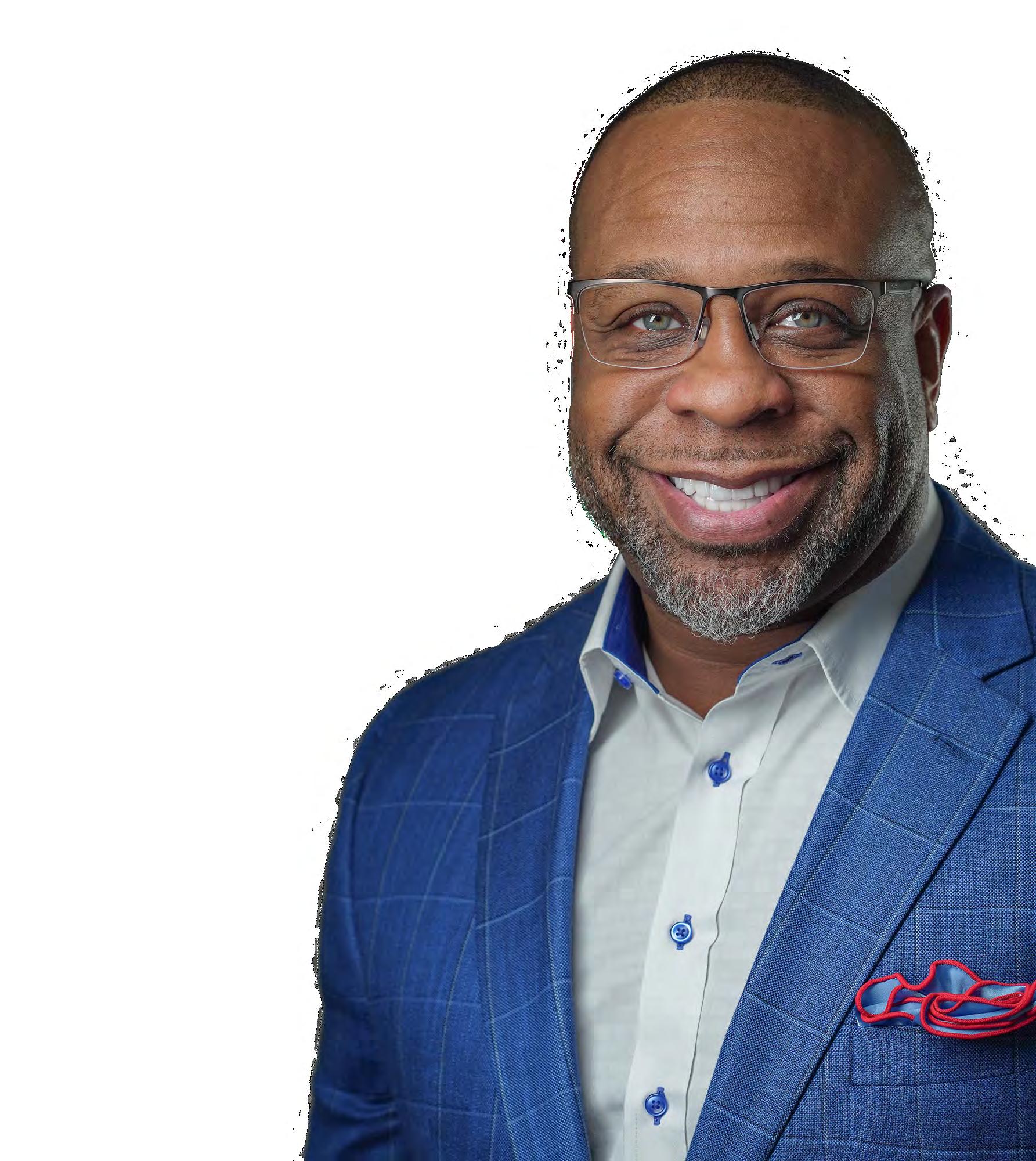
4201 Medical Center Dr., Ste. 100 McKinney, TX 75069 (469) 796-4295
204 Medical Dr., Ste. 110 Sherman, TX 75092 (469) 796-4295
Please call to make an appointment.
Life is a series of evolutions, and this issue of LIVING WELL Magazine is all about celebrating growth, determination, and the ability to embrace change. Our cover story on Demi Moore highlights reinvention—both in career and in life. From her early years in Hollywood to her recent return to the awards stage with Th Substance, Moore’s story is a powerful reminder that life’s most rewarding chapters are often the ones we never saw coming. Be sure to watch this year’s Oscars on March 2 to see if she takes home the award for her performance in The Substance. In the meantime, check her story out on page 8.
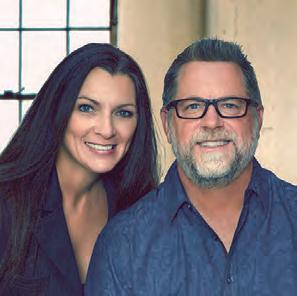
But reinvention isn’t just for the stars—it’s for all of us. In Supporting a Grieving Heart (page 18), we explore how to show up for those experiencing loss with true empathy and presence. Grief doesn’t come with a rulebook, but small gestures of kindness can make a world of difference.
For those feeling stuck in the idea that adventure is reserved for the young, Adventure Has No Expiration, on page 24, proves otherwise. There’s no deadline on pursuing passions, traveling to new places, or trying something for the fist time. Whether it’s picking up a paintbrush, tackling a long-overdue bucket list item, or stepping outside of a comfort zone, adventure is always an option.
And because living well also means living safely, No Slips, Just Smooth Living highlights smart, simple ways to make homes more functional and comfortable. It’s not about limitations—it’s about creating an environment that supports independence and peace of mind for years to come. Read it on page 44.
At its core, this issue is about embracing life fully—through every high, every challenge, and every unexpected twist. Whether you’re reinventing yourself, helping a loved one navigate grief, embracing adventure, or making your home a sanctuary, we hope these stories inspire you to live well—whatever that means to you.
Be well!

PRESIDENT & CEO
SAM HOUSTON
VICE PRESIDENT & CFO SPRING HOUSTON
EDITOR, FEATURE WRITER & SOCIAL MEDIA
SONDRA BARR
ART DIRECTOR
VANESSA FRYER
ACCOUNTS MANAGER JENNIFER BEAVERS
WEBSITE LYDIA ROGERS
ADVERTISING & SALES
TEXAS: Denton County, Dallas County, Collin County
TEXAS & OKLAHOMA: Texoma Area
WRITE TO US:
Tell us who you would like to see featured on the cover, or what subjects you would like covered in upcoming editions of LIVING WELL MAGAZINE at info@livingwellmag.com
SUBSCRIPTIONS & CUSTOMER INQUIRIES
Houstons of Dallas Publishing, Inc. 102 E. Broadway, #901 Prosper, TX 75078
www.LivingWellmag.com
Phone: (214) 507-1000 Fax: (855) 248-2132
LIVING WELL MAGAZINE is a source for quality educational articles on living a healthy, vibrant life. Our focus is on connecting our readers with the latest information on a host of topics relevant to their evolving life. From cutting edge medical news and procedures to top-tier financial, legal and lifestyle information. Connecting readers to leading medical and business professionals in their community in Texas and Oklahoma.
MARCH/APRIL 2025 All advertisements in this Magazine are placed by third parties. We do not control or endorse either the advertisements or their content. Further, we do not
refers to the name of this Magazine, and all versions of Living Well Magazine as well as Houstons of Dallas Publishing, Inc.







With a clear focus on quality, reliability and timely completion, Plyler Construction works with owners of such diverse commercial, institutional and industrial projects as manufacturing, warehousing, educational, retail, support and religious facilities to provide the most appropriate delivery method. Plyler offers pre-construction services, experienced construction management, a variety of delivery methods, equipment setting and in-plant maintenance services.
We work with our clients, not just for them. That’s just one of the reasons architects, designers, and industrial and commercial project owners from across the nation have looked to Plyler Construction for more than a half-century for solutions to their building needs. At Plyler Construction, we build relationships.
General Construction
Pre-Construction
Design-Build Capabilities
Construction Management
MEP
Mechanical
Electrical
Plumbing
HVAC
Equipment Setting
Steel
Steel Fabrication
Steel Erection
Specialty Fabrication



Dr. Hannah Abigail, a fellowship-trained foot and ankle reconstruction podiatric surgeon, is dedicated to providing exceptional care to patients in North Texas. She is committed to providing top-tier care and innovative treatment solutions and is a strong proponent of minimally invasive surgery. Dr. Abigail brings expertise and confidence in handling all aspects of reconstructive foot and ankle procedures, including complex trauma, diabetic ulcer care, flaps, sports medicine, elective reconstruction, and complications.
Whether you are experiencing foot pain, a sports injury, or a chronic ankle condition, Dr. Abigail is available to help you achieve optimal health and get back to your daily activities with confidence. Contact her office today to schedule an appointment.



By SONDRA BARR
“I THOUGHT MAYBE I WAS DONE.”
Demi Moore’s voice trembled as she said those words during her acceptance speech at the Golden Globes earlier this year. Standing on stage, the now 62-year-old actress’s raw honesty captivated the audience. Hollywood’s ultimate survivor had just won her fist major acting award—and her journey to that moment is anything but ordinary.
For decades, Demi Moore has been a name synonymous with fame and beauty. From her breakout role in St. Elmo’s Fire to her career-definig performance in Ghost, Moore has consistently defid expectations. And now, with her fist Oscar nomination for her haunting portrayal of Elisabeth Sparkle in Th Substance, she’s proving that reinvention is possible at any age.
Born in Roswell, New Mexico, in 1962, Moore grew up in a world far removed from Hollywood glamour. Her father, a charming but troubled man, and her mother, a dreamer chasing stability, moved the family frequently. By the time Moore was 15, she had attended more schools than she could count.
“I didn’t feel like I belonged anywhere,” she shared in a candid interview with Vanity Fair from the ’90s. “Every six months, I was a new version of myself, trying to fit into someone else’s world.”
That sense of impermanence shaped her early ambitions. When she settled in West Hollywood, a chance encounter with actress Nastassja Kinski gave Moore a glimpse of what confidece and success could look like. Inspired, she dropped out of high school at 16 to pursue acting.
Her fist big break came not on the silver screen but in the world of daytime television. At just 18, Moore landed a role on the soap opera General Hospital as investigative journalist Jackie Templeton, a character whose determination and grit mirrored Moore’s own hunger for success.
Around the same time, Moore married musician Freddy Moore, whose surname she adopted both personally and professionally. The relationship, while short-lived, played a signifiant role in her early life. “Freddy taught me to believe in myself,” she shared in her memoir Inside Out. “He encouraged me to pursue my dreams, even when they seemed impossible.”
But her path wasn’t linear. “I had no formal training,” Moore admitted to Interview Magazine. “I learned by throwing myself into the fie and faking it until I figued it out.”

EVERY SIX MONTHS, I WAS A NEW VERSION OF MYSELF, TRYING TO FIT INTO SOMEONE ELSE’S WORLD.

WE’VE ALL BEEN THERE. TRYING TO PERFECT SOMETHING ONLY TO MAKE IT WORSE. IT’S A METAPHOR FOR SO MUCH OF LIFE.
Moore’s fist taste of fame came with her role in St. Elmo’s Fire, where she became part of the iconic Brat Pack alongside Rob Lowe, Emilio Estevez, and Ally Sheedy. The film, which captured the spirit of a generation grappling with post-college life, catapulted Moore into the spotlight. However, the pressures of newfound fame took a toll. Immersed in the fast-paced and often chaotic Hollywood lifestyle, Moore turned to partying as a coping mechanism.
“I was trying to numb myself,” she later admitted in her memoir Inside Out, reflcting on the period. The lifestyle threatened to derail her career before it even began. A critical turning point came when Columbia Pictures insisted she get sober to keep her role in St. Elmo’s Fire. The ultimatum forced Moore to take stock of her life. She complied, and the experience became a foundation for the resilience that would defie her career.
“ That was the fist time I realized I could take control of my own narrative,” she shared with Vanity Fair
What followed was a string of box-offichits that cemented her place in Hollywood. Ghost (1990), a supernatural love story, earned Moore widespread acclaim and established her as a leading actress. A Few Good Men (1992) showcased her commanding presence alongside Tom Cruise and Jack Nicholson. By 1996, Moore made history as the highest-paid actress for her role in Striptease. Her fearless choices and commercial appeal solidifid her position as one of Hollywood’s top stars.
However, the attention wasn’t always positive. Critics frequently dismissed her talent in favor of focusing on her appearance. “A producer once called me a ‘popcorn actress,’” Moore shared during her 2025 Golden Globes speech. “It stuck with me for years, and I let it shape how I viewed myself.”
As the ’90s faded, so did Moore’s place in the spotlight. Her muchpublicized marriage to Bruce Willis ended, and roles became harder to come by. By her 40s, Moore felt like she no longer fit Hollywood’s mold.
“I wasn’t the ingenue anymore, but I wasn’t ready to play someone’s mother either,” she told The Guardian
Her third marriage, to Ashton Kutcher, thrust her back into the tabloids, often for all the wrong reasons. When that relationship ended, Moore hit a low point. “I started questioning everything— my worth, my purpose. It was a dark time,” she admitted in her memoir, Inside Out.
But Moore’s resilience kicked in. She stepped back from the limelight, focused on raising her daughters, and found solace in writing. Her 2019 memoir became a bestseller, offering an unfliching look at her life.
Fast forward to 2024. Moore’s career reignited with Th Substance, a body-horror film that premiered at Cannes. Directed by Coralie Fargeat, the movie delves into themes of aging, vanity, and societal
pressures—subjects Moore knows intimately. Playing Elisabeth Sparkle, a former fitness icon desperate to reclaim her youth, required Moore to confront her own fears about aging.
“It wasn’t about looking glamorous,” Moore explained to W Magazine. “It was about stripping everything away and being completely raw.”
The role demanded intense vulnerability, with scenes that left Moore emotionally and physically exposed. One particularly grueling sequence involved her character obsessively applying makeup in a spiral of self-doubt, a moment Moore described as both cathartic and devastating.
“We’ve all been there,” she said in an interview with The Guardian “Trying to perfect something only to make it worse. It’s a metaphor for so much of life.”
Critics hailed her performance as a career-best, praising her fearless embodiment of a woman unraveling under the weight of societal and self-imposed expectations. The film’s exploration of identity resonated deeply with Moore.
“At its core, the film is about breaking cycles,” she said. “It’s a reminder that change is the only constant.”
For Moore, Th Substance was an opportunity to reconnect with her passion for storytelling and to challenge herself in ways she hadn’t before. Working alongside co-star Margaret Qualley, who portrayed the younger version of her character, brought a unique dynamic to the film. “Margaret and I often joked about representing two sides of the same coin,” Moore told W Magazine. “Our dynamic became a metaphor for the tension between clinging to the past and embracing the future
Away from the cameras, Moore has embraced a quieter life. She spends much of her time at her Idaho home, where she practices yoga, meditates, and dotes on her dogs. Nestled in nature, it’s her sanctuary—a place where she can unplug and reconnect with herself.
“I’ve stopped chasing perfection,” she shared with W Magazine “I’m learning to love where I am right now.”
Her daughters, Rumer, Scout, and Tallulah, remain central to her life. “ They’ve taught me more about resilience and love than I ever thought possible,” Moore shared during a conversation with The Guardian. She’s also a steady presence for her former husband Bruce Willis and his wife, Emma Heming Willis, as they navigate his ongoing health struggles. Moore’s bond with Willis remains strong. “Being there for Bruce has reminded me of the importance of showing up for the people you love, no matter what,” she shared in an interview with People Magazine earlier this year.
As she prepares for her big Oscar night on March 2, Moore is reflctive but grounded. Winning would be deeply meaningful, not just as validation for her hard work and evolution as an actress, but as a symbol of perseverance and reinvention in a career spanning decades. “Ths nomination is a cherry on top, but the real reward has been fiding peace within myself,” she told Interview. “At 62, I fially feel like I belong.”



Grace is a sweet 69 year old widow. Her husband died recently from a long illness. She has two children: a son, Todd, and a daughter, Kate. Todd is disabled and suffers from mental illness. Although Todd lives in his own apartment, he is unable to work. He receives Food Stamps, Supplemental Security Income (SSI) and Medicaid. Grace has to supplement Todd’s meager income so that he will have enough money for his basic needs. He is a meek, loyal man who faithfully helped Grace care for his father. Her daughter, Kate, lives nearby. Kate is fiancially secure. Kate has a tendency to bully Grace. Kate called yesterday, cursed at Grace and hung up on her. While Kate regularly checks on Grace, she never calls or visits Todd. Kate was always too busy to help Grace care for her husband. Grace also has a responsible, caring nephew who lives in a nearby state. He regularly visits Grace and Todd.
Grace owns her home, valued at around $100,000. She keeps $10,000 hidden under her mattress, $30,000 in her checking account and $110,000 in a brokerage account. Grace wants to protect her assets if she ever has to enter a nursing home, which she heard can cost $4,800 per month. She would like to keep control of her funds if possible. She desires to leave an inheritance for both children but she is especially worried about Todd because she knows his government benefits are insufficit to meet his needs. She knows that if she leaves Todd an outright inheritance, he will immediately lose his SSI/Medicaid which would be catastrophic. Grace does not want to leave her assets to Kate to use for Todd because Grace does not trust Kate to care for Todd. Even if Grace trusted Kate, Grace knows that if Kate died, Kate’s will bequeaths her assets to her husband, not Todd. Further, if a divorce occurred, Kate’s husband might get Todd’s money. Grace feels alone and doesn’t know how to solve these problems. Grace decides to make an appointment with her elder law attorney to ask him what to do.
By CRAIG WATSON
The attorney recommends that Grace establish a Special Needs Trust (SNT) to benefit Todd. If Grace bequeaths her money to this trust, it will allow Todd to benefit from his inheritance without causing him to lose his SSI/Medicaid benefits. If Grace has to enter a nursing home, the attorney explains that Grace will be able to transfer her fiancial assets into the SNT without incurring a Medicaid “Look back” penalty period. Ths means that Grace’s giftto the Trust would not disqualify her from receiving Medicaid assistance to help pay for her nursing home expenses. Grace can keep control of her assets up until she dies or has to enter a nursing home. She will also be able to qualify immediately for Medicaid assistance with her nursing home bills and the SNT will keep Todd from losing his government benefits. At Todd’s death, the Trust will provide for the assets to be distributed to Kate.
Grace decides to ask her nephew and his wife to be trustees of the Trust. Although the SNT must be irrevocable, the attorney explains that a clause allowing Grace or Todd to make some changes to the distribution provisions can be included to enhance its flexbility. The elder law attorney suggests that Grace use a special deed to revocably convey a life interest in her house to her son. At his death, the house will pass to her daughter. Ths deed will avoid a possible Medicaid Estate Recovery Program claim against her house if she needs Medicaid to assist with her nursing home bills. Grace’s property taxes will stay the same for the rest of her life and both her son and daughter are likely to enjoy very favorable capital gains tax if and when they sell the house.
Grace experiences a flod of relief when she realizes that the elder law attorney’s plan to use a Special Needs Trust meets all of her goals: asset protection for her assets for the rest of her life and during Todd’s remaining life so that he can receive supplemental income while also keeping his government benefits. Her estate will even avoid probate!
Dear Olivia,
My 94-year-old grandmother has been living alone in her home, but she has had multiple falls lately, and we are concerned that she may need more support with her care. As we look at the best caregiving options to ensure she is not alone, how do we know when she is ready for hospice? ~Unsure of Next Steps
Dear Unsure of Next Steps, I am glad that you as a family are pursuing options for caregiving. This is often the most difficult part of the aging process—determining when it is not safe for someone to live alone anymore. There are many options for supporting an aging loved one such as bringing caregiving support into the home, looking assisted living, memory care or skilled nursing facilities, as well as other long-term care solutions. Often a Medical Social Worker (MSW) can assist with finding the right solution. You can ask her primary care physician if this resource is available to your grandmother. In terms of the medical component of her care and determining when someone is ready for the hospice benefit,




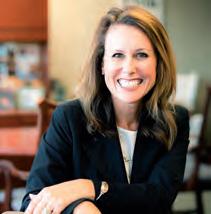

there are several easy questions to consider. First, an increase or onset of falls is important to track, so keep notes on when the falls occur and if there are any injuries. Also, consider what activities of daily living, such as bathing, toileting, dressing and preparing food, may be becoming more difficult, as this decline is important in hospice consideration. Also, as people age or begin to decline, they may eat less, and weight loss may become evident, which is a factor in determining decline. Another indicator of decline is how often an individual is hospitalized or visits the emergency department; keep a list of these encounters. Lastly, if a loved one is expressing that they no longer wish to pursue curative therapy or go to the hospital, that is a sign that it may be time to have a conversation with the physician about next steps in care. All of these factors play a role in the family beginning to consider hospice care, and the physician determining if it is the right level of care. Best wishes to you, as we all want to ensure our loved ones get the best care possible at the right time.
~Olivia

To schedule your free in-home informational visit please call (214) 689-0000 or email gethelp@vnatexas.org For volunteer opportunities please call (214) 689-2271 or email volunteer@vnatexas.org
Josh Creel, DC is a chiropractor with Airrosti, a healthcare group that specializes in rapid recovery for soft tissue injuries by utilizing manual therapy—a hands-on treatment used to alleviate pain, improve mobility, and promote overall physical well-being. In nearly all cases, this allows for rapid recovery, complete injury resolution, and lasting results. In-clinic patients should expect to see dramatic improvement after the first visit, and most patients experience complete injury resolution in as few as three visits (based on in-clinic and Remote Recovery patientreported outcomes).
Dr. Creel has been serving the McKinney/Prosper area for 10 years and provides patients with an individualized treatment plan, and uses a variety of techniques, including joint mobilization, soft tissue manipulation, and muscle energy techniques to address specific musculoskeletal issues and promote recovery.
Dr. Creel graduated with honors from Mississippi State University. Soon after, he received his Doctor of Chiropractic degree from Parker University in Dallas, Texas. In Dr. Creel’s free time, he enjoys all types of fitness activities and spending time with his wife and three children. Dr. Creel is an active member of Lighthouse Church in Prosper, TX.


Macular Degeneration
Diabetic Eye Disease
Retinal Vein & Artery Occlusions
Flashes & Floaters
Retinal Tears & Detachments
Macular Pucker/Epiretinal
Membrane
Macular Holes
Uveitis

At Texas Macula & Retina, our mission is to provide exceptional eye care with a focus on the diagnosis, treatment, and management of retinal disorders.
Dr. Adams is a board-certified Ophthalmologist and Ophthalmic Surgeon specializing in Vitreoretinal Surgery. His principal areas of interest include age-related macular degeneration, diabetic retinopathy, retinal detachment repair, macular surgery, retinal lasers, and secondary intraocular lens implantation.
Dr. Adams and his team are committed to preserving and improving the vision and overall quality of life for our patients by offering the most advanced and personalized retina care available.

By MATTHEW K. ADAMS, MD, MBA

Diabetes is a chronic condition that affects millions of people worldwide, and while its impact on blood sugar levels is well-known, its effects on vision are often overlooked. Understanding how diabetes can affect eye health is crucial for all people who have this condition. It’s important to understand the various ways diabetes can impact your eyes so you can protect your vision.
Understanding Diabetic Eye Disease
Diabetes primarily affects the eyes through a group of conditions collectively known as diabetic eye disease. The most common of these conditions are diabetic retinopathy, diabetic macular edema, and cataracts. Each of these conditions can lead to vision impairment or even blindness if left utreated.
Diabetic Retinopathy
Diabetic retinopathy is the most common cause of vision loss among people with diabetes and is a leading cause of blindness among working-aged adults. Ths condition occurs when high blood sugar levels damage the blood vessels in the retina, the light-sensitive tissue at the back of the eye. There are two stages of diabetic retinopathy: non-proliferative and proliferative. In the non-proliferative stage, the blood vessels in the retina may swell and leak fluid, causing blurry vision. In the more advanced proliferative stage, new, abnormal blood vessels begin to grow on the surface of the retina. These vessels can bleed into the vitreous (the clear, gel-like substance inside the eye), leading to severe vision loss or even retinal detachment.
Diabetic Macular Edema (DME)
DME is a complication of diabetic retinopathy and occurs when fluid leaks into the macula, the part of the retina responsible for sharp, central vision. Ths leakage causes the macula to swell, leading to blurry or wavy vision. DME is a major cause of vision loss in people with diabetes and can make it difficult to perform tasks that require clear vision, such as reading, driving, or working on a computer.
Cataracts
While cataracts can develop in anyone as they age, people with diabetes are at a signifiantly higher risk of developing them at a younger age. A cataract occurs when the eye’s lens becomes cloudy, leading to vision that is blurry, dim, or tinted. In individ-
uals with diabetes, high blood sugar levels can cause the lens to swell and change its clarity, accelerating the formation of cataracts. Ths can make it challenging to see clearly, especially in lowlight conditions (i.e. driving at night).
The good news is that by managing your diabetes effectively and getting regular eye exams, you can signifiantly reduce your risk of developing serious eye problems. Here are some steps you can take to protect your vision:
1. Control Your Blood Sugar Levels
The most important step in preventing diabetic eye disease is to keep your blood sugar levels within your target range. Consistently high blood sugar can damage the blood vessels in your eyes, so it’s crucial to monitor your levels regularly and follow your healthcare provider’s recommendations for managing your diabetes.
2. 2. Monitor Blood Pressure and Cholesterol
High blood pressure and high cholesterol can further increase your risk of developing diabetic eye disease. Managing these conditions through medication, diet, and exercise can help protect your eyes and overall health.
3. 3. Get Regular Eye Exams
Annual comprehensive eye exams by a retina specialist are essential for detecting diabetic eye disease in its early stages, often before you notice any symptoms. During these exams, your eye doctor will dilate your pupils to get a better view of the retina and check for signs of damage. Early detection can lead to more effective treatment and a better outcome for your vision.
4. 4. Adopt a Healthy Lifestyle
Eating a balanced diet, exercising regularly, and maintaining a healthy weight can help you manage your diabetes and reduce the risk of complications, including those that affect your eyes. Incorporating foods rich in antioxidants, such as leafy greens, fruits, and nuts, can also support eye health.
By controlling your blood sugar levels, getting regular eye exams, and adopting a healthy lifestyle, you can reduce your risk of diabetic eye disease and maintain clear vision for years to come. Remember, your eyes are not only the windows to your soul but also to your overall health. Don’t take them for granted.

By CAROL WHITMAN
Grief is one of the most profound expressions of love, but it is also among the most complex and painful experiences a person can endure. As a grief counselor, I have seen countless individuals grapple with the void leftby the loss of someone they cherished. To witness grief is to glimpse the raw, unvarnished core of human emotion. It can be overwhelming to know how to support someone who is navigating this terrain, but your presence and compassion can make all the difference.
The fist and perhaps most important thing to remember is that grief is not something to be “fied.” Many well-meaning people feel compelled to offer solutions or platitudes in an effort to alleviate the pain. Phrases like “ They’re in a better place” or “Everything happens for a reason” may be offered with the best of intentions but often fall flat, leaving the grieving person feeling misunderstood or dismissed. Grief does not require solutions; it requires acknowledgment. Your role is not to take the pain away but to bear witness to it. Sometimes, the most powerful thing you can say is, “I’m here, and I’m so sorry for your loss.”
Grief manifests differently for everyone, shaped by the nature of the relationship lost, cultural influences, personality, and individual coping mechanisms. Some people cry openly and often, while others retreat into silence. Some may want to talk about their loved one incessantly, recounting memories and sharing stories, while others might avoid the subject altogether. It is crucial to follow the grieving person’s lead, allowing them the autonomy to navigate their emotions in their own way and time. Imposing expectations or judgments on how someone “should” grieve can inadvertently add another layer of pain.
One of the most meaningful ways to support someone in grief is simply to be present. Ths presence need not be grand or intrusive; it can be as subtle as sitting quietly beside them, holding their hand, or checking in with a phone call or text. Presence signals to the grieving person that they are not alone, even in their darkest moments. It reassures them that they are seen and supported, even when their world feels like it has shattered. Being present also means resisting the urge to turn away from their pain, no matter how uncomfortable it might make you. Grief can be messy, unpredictable, and, at times, frightening, but your willingness to remain steadfast in the face of it is a gift hat cannot be overstated.
It is also important to remember that grief does not follow a timeline. While society often expects individuals to “move on” within a certain period, the reality is that grief ebbs and flws, often resurfacing in waves long after the initial loss. Birthdays, anniversaries, and holidays can be especially poignant reminders of what has been lost. Offering support during these times—perhaps by sending a thoughtful note, offering to accompany them to a gathering, or simply acknowledging the signifiance of the day—can provide immense comfort. Even long after the loss, small gestures of remembrance and care can reinforce that their loved one has not been forgotten.
Listening is another powerful tool in supporting someone through grief. When a grieving person chooses to open up, they are entrust-
ing you with their most vulnerable thoughts and feelings. Listen without interruption, judgment, or the need to interject your own experiences. Resist the urge to compare their grief to something you have endured; each loss is unique, and attempting to draw parallels can sometimes diminish their experience. Instead, offer a safe space where they feel free to express whatever is on their mind, whether it is sorrow, anger, guilt, or even moments of unexpected joy.
Practical support can also be invaluable during a time of loss. Grief can be all-consuming, leaving little energy for everyday tasks like cooking, cleaning, or managing responsibilities. Offering to prepare a meal, run errands, or help with childcare can alleviate some of the burdens they may be facing. Rather than saying, “Let me know if you need anything,” which places the responsibility on them to reach out, try offering specifichelp: “I’d love to bring dinner by this week. Would Wednesday or Friday work better?” Ths approach is both thoughtful and actionable, showing that you are genuinely committed to easing their load.
While it is natural to want to provide comfort, it is also important to respect boundaries. Some grieving individuals may need space to process their emotions privately. Others may prefer to keep their routines intact as a way of maintaining a sense of normalcy. Pay attention to cues and be sensitive to their needs, understanding that these may shiftover time. Grief is not linear, and what is helpful one day might feel overwhelming the next. Flexibility and patience are key.
For those who are deeply entrenched in grief, professional support may become necessary. It is not uncommon for individuals to feel hesitant or even resistant to seeking counseling or therapy. Gently suggesting the idea, without pressure or judgment, can plant a seed. Let them know that reaching out for professional support is not a sign of weakness but an act of courage and self-care. Sometimes, simply normalizing the idea—”Many people fid it helpful to talk to someone who specializes in grief”—can make the prospect feel less daunting. Offering to drive them to counseling and wait in the car might make their fist step easier.
If you’re someone offering support while also grieving, it is equally important to care for yourself. Grief can be emotionally taxing. Allow yourself to acknowledge your own feelings and seek support if needed. Surrounding yourself with a network of friends, family, or even a counselor can help you navigate the complexities of being a companion to someone in grief. By caring for yourself, you ensure that you can continue to show up fully and compassionately for your loved one.
Ultimately, supporting someone through grief is about honoring the depth of their loss and the love that underpins it. It is about showing up, not with answers or fies, but with an open heart and a willingness to walk alongside them in their pain. It is about bearing witness to their sorrow while holding hope for their healing, however distant that may seem. Grief is a testament to the bonds we share, and your support can be a lifeline in helping someone fid their way through the darkness toward a place of light and remembrance.







when wearing glasses
• Striking design is modern, sleek and functional; available in five stylish colors
• With carefully engineered microphone covers to help reduce wind and touch noise
• Improved battery life and a portable charger for convenient on-the-go charging.

“ The fantastic thing about this product is the way it combines great design with great sound. It looks smart – not just for the sake of smart looks, but also for the sake of smart audiology. ”
Anne Mette Jeppesen Senior Audiology Solution Manager, WIDEX
Visit HearCare and experience the new angles of natural hearing! Call 903-868-2650 today!
2-Week Free In-Home Trial
$500 Off a set of premium digital hearing instruments. Some restrictions apply.






Total
Headache


By EMILY REED
Age is just a number. It’s an adage that has echoed through the ages, but its truth resonates louder the longer we live. Life, after all, is not about the years behind us but the spirit within us. George Burns, the legendary comedian who performed well into his nineties, once quipped, “You can’t help getting older, but you don’t have to get old.” Therein lies the secret—our outlook on life is what defies us, not the candles on the cake.
As we move through the seasons of life, it’s easy to fall into the trap of believing that certain things are behind us. We’re often told to slow down, act our age, or stay in our lane. But who sets these rules anyway? It’s our life, we get to write the narrative. Why not embrace the joy of being vibrantly and unapologetically alive? Why not wake up every morning with curiosity and the thrill of possibility?
Take it from the ever-inspiring Sophia Loren, who once said, “ There is a fountain of youth: it is your mind, your talents, the creativity you bring to your life and the lives of people you love. When you learn to tap this source, you will truly have defeated age.” Loren’s words remind us that youth is not something we lose with time; it’s something we cultivate by staying mentally active, sharing our gifts, nd pursuing our passions.
For many, turning 40, 50, or 60 can feel like a signifiant milestone, a marker of transition. But think about what milestones truly represent. They’re opportunities to celebrate how far we’ve come and to look forward to the adventures still ahead. Mick Jagger, the iconic Rolling Stones frontman who continues to tour and perform well into his eighties, is living proof that passion and purpose are timeless. “Anything worth doing is worth overdoing,” he’s been known to say. That’s the kind of zest we could all use—the freedom to dive into life with reckless enthusiasm, no matter our age.
Sometimes, it’s the small acts of rebellion against societal expectations that remind us of our youthful spirit. Maybe it’s picking up a new hobby—like learning to play the guitar or taking up watercolor painting. Maybe it’s dancing in the kitchen or fially booking that dream trip you’ve been talking about for years. Helen Mirren, who has become a global symbol of aging gracefully while remaining thoroughly dynamic, once said, “Aging has a wonderful beauty, and we should have respect for that.” Her wise perspective is a reminder that life just gets richer as we go.
A young heart doesn’t mean denying the wisdom we’ve gained over the years. It’s about merging that wisdom with playfulness. There’s beauty in dancing between these two states, and no one embodies this better than Betty White, who worked into her nineties with an infectious joy. She once said, “I may be a senior, but so what? I’m still hot.” That cheeky attitude is a lesson for us all—confidece and humor are ageless qualities.
Science even backs up the idea that staying young at heart has tangible benefits. Studies have shown that people who maintain a positive attitude about aging tend to live longer and have better physical and mental health. Thik about it: when we see life as an adventure rather than a decline, we’re more likely to stay active, engage with others, and embrace new experiences. Keeping a sense of humor is perhaps the easiest way to keep the years at bay. George Clooney joked, “I’ve learned one thing: if you’re not laughing, you’re crying.” Whether it’s laughing at the absurdities of life or at ourselves, humor keeps us light and reminds us not to take things too seriously.
Adventure, too, isn’t just for the young. It’s for the bold. It’s for anyone who decides to embrace the unknown and savor the journey. Julia Child didn’t even learn to cook until she was in her late 30s, and she didn’t become a household name until her fiies. Imagine if she had thought it was too late to start. Her life—and the lives of countless people she inspired—would have looked so different. Her story is proof that it’s never too late to reinvent yourself, to dream, and to chase something new.
Reinvention is one of the most exciting giftsof aging. For some, it might be returning to passions that were put on hold. For others, it might be fiding new communities or causes to dedicate time to. The world is full of opportunities to learn, grow, and thrive at every stage of life. As Diana Ross once said, “You can’t just sit there and wait for people to give you that golden dream. You’ve got to go out there and make it happen for yourself.” Her words are a call to action—to grab life by the horns and keep striving.
As we age, we also gain the ability to savor the moment more fully. There’s a freedom that comes with having nothing to prove. Oprah Winfrey summed it up beautifully: “With age comes the understanding and appreciation of your most important asset: your health.” Ths is the time to invest in self-care, not as a luxury, but as a celebration of all the years we’ve lived and all the ones we have yet to enjoy.
Let’s also take a moment to reflct on the beauty of connection. Staying social and forming relationships, both new and old, keeps us engaged and emotionally fulfilled. Whether it’s joining a book club, mentoring someone younger, or simply picking up the phone to call an old friend, these connections enrich our lives in countless ways.
Finally, let’s remember that every wrinkle and gray hair is a badge of honor, a testament to a life lived fully. As Joan Collins put it, “Age is just a number. It’s totally irrelevant unless, of course, you happen to be a bottle of wine.” So let’s embrace our vintage—aged to perfection and better with time.
Life doesn’t come with an expiration date for fun, joy, or growth. Age is not a limitation; it’s a gateway to more—more wisdom, more freedom, more adventure. To anyone reading this who’s feeling old, let this be your reminder: keep dreaming, keep laughing, keep learning. The best is yet to come.

» Staffed by 2 Licensed, Doctors of Audiology
» Hearing Aid Fittings, Maintenance and Repairs
» Invisible Fittings/Open Fittings
» Evaluation Period On All Hearing Aids
» Hearing Evaluations For All Ages
» Wireless/Connectivity Hearing Solutions
» Battery Purchase Programs
» Custom Ear Protection
» Assistive Devices


By CASSANDRA WILSON, AU.D., CCC-A, FAAA

From the moment we wake up to the time we go to sleep, sound shapes our experiences and connections to the world around us. It alerts us to danger, delivers vital information, and brings us moments of joy, laughter, or even tears. Sound is a key part of what makes life rich and engaging. However, when hearing issues arise and this vital sense begins to diminish, our ability to stay informed, entertained, and connected can suffer greatly. Over time, this loss often affects our quality of life, a sentiment frequently echoed within my clinic by those experiencing hearing impairment.
Hearing loss is a common condition that impacts individuals across all demographics, although it becomes increasingly prevalent as we age. Unfortunately, many people delay seeking treatment, often underestimating the broader effects that untreated hearing loss can have on their overall well-being. Beyond the physical implications, hearing loss can lead to social isolation, cognitive decline, and psychological challenges such as depression or anxiety. The good news is that early intervention can signifiantly reduce these negative consequences, allowing individuals to maintain a higher quality of life.
When someone suspects their hearing has declined, the fist step should be to seek the expertise of a hearing care professional, particularly an audiologist. As audiologists, we’re uniquely trained to diagnose and manage hearing and balance disorders. We perform comprehensive evaluations that go beyond simply determining whether or not a person needs hearing aids. A thorough assessment typically includes an in-depth discussion of the patient’s lifestyle, hearing habits, and specificneeds. Ths personalized approach is key to fiding effective solutions that align with the individual’s daily life.
One of the most valuable aspects of working with an audiologist is our ability to provide tailored education about hearing loss. For many people, the process of understanding why hearing loss occurs and how it affects them is crucial. A good audiologist will take the time to explain the causes of hearing impairment and the mechanics of hearing aids. We help demystify the technology, ensuring our patients feel comfortable and confidet about their options. Ths educational component often empowers individuals to make informed decisions about their hearing care, fostering a sense of partnership and trust with their audiologist.
The role of an audiologist extends far beyond fitting hearing aids. While hearing aid technology has advanced signifiantly in recent years, studies have shown that the expertise and approach of the audiologist are often the most signifiant factors influencing the success of hearing aid use. According to one large study (MarkeTrak VIII), the
clinical protocol and personalized care provided by the audiologist have a greater impact on patient outcomes than the technology itself. Ths underscores the importance of selecting a qualifid and dedicated professional to guide the hearing care journey.
Consumer feedback also highlights the critical role audiologists play in ensuring satisfaction with hearing aids. Studies conducted by the Hearing Industries Association and Consumer Reports revealed that a patient’s “delight” with their hearing aids often stems from the care and attention provided by their audiologist. Key factors contributing to this satisfaction include the audiologist’s willingness to assume patients have limited prior knowledge, their ability to educate patients about hearing loss, and their thorough explanations of how hearing aids function. Additionally, audiologists who routinely schedule follow-up appointments and address patients’ initial experiences during the fist week of wearing hearing aids were consistently praised.
These fidings highlight the value of an audiologist’s personalized care. Audiologists are not just fitting devices; they are building relationships and ensuring that patients feel supported throughout the entire process. By tailoring solutions to each individual’s unique circumstances, they maximize the effectiveness of hearing aids and improve patients’ overall satisfaction. Ths level of care can be transformative, helping patients rediscover the sounds and connections that make life fulfilling.
Hearing loss is often a progressive condition, which means that regular follow-ups are essential for monitoring changes and adjusting treatment plans as needed. Audiologists play a pivotal role in this longterm management, ensuring that patients continue to receive optimal support as their needs evolve. Ths commitment to continuity of care further distinguishes audiologists as indispensable partners in hearing health.
It is also worth noting that untreated hearing loss has been linked to broader health concerns, including an increased risk of dementia and other cognitive challenges. Audiologists are often at the forefront of identifying these risks and implementing strategies to mitigate them. Their work not only improves hearing but also contributes to overall health and well-being.
If you or someone you know is experiencing hearing difficulties, taking action sooner rather than later is key. Seeking the care of an audiologist can open the door to effective solutions, renewed connections, and an improved quality of life. Don’t wait to prioritize your hearing health. Reach out to us at Hearing Services of McKinney today and let us help you take that fist step toward reclaiming the sounds that make life meaningful.

Southwest Foot & Ankle Center is a respected group of board certified foot and ankle surgeons. They are fellow trained surgeons, and board certified in wound care and reconstructive surgery. All physicians have also completed an intense residency and fellowship in the area of limb salvage, and foot and ankle surgery. The team at Southwest Foot & Ankle Center strive to make each patient’s experience personable. Our outcomes are of perfection and meticulous in surgery. As a result, patients from all over the country seek to be treated by DFW Wound Care Center.
MIS—Minimally Invasive Surgery
Heel Pain (Plantar Fasciitis) Stem Cell Therapy
Toenails

Custom Orthotics & Braces
Laser Therapy for Pain, Swelling, Arthritis, and Wounds




By SARAH ELISABETH SAWYER
“Grief is the constellation of internal thoughts and feelings we have when someone we love dies. Mourning is when you take the grief you have on the inside and express it outside yourself. In other words, mourning is grief in action.”
—Allen Wolfelt, Center for Loss & Life Transition
When someone you love dies, every physical and emotional response known to humans can overwhelm you in an instant. To begin sorting this out—no matter how long it’s been since the death— you’ll want to understand the difference between grieving and mourning, and why both are natural and needed.
Grief is internal and defied as “keen mental suffering or distress over loss; sharp sorrow.” You will feel the pain, the numbness, the brain fog, the lack of (or increase in) appetite. Physical and emotional symptoms can last years, though they can lessen over time if you focus on expressing them through mourning.

Mourning is the outward expression of your grief. You cry, laugh, kick, and scream. How you release the internal grief depends on timing and circumstances. The external expression of your grief is also in remembering and honoring the person who passed. You can do this by writing about them in a social media post, creating a photo album of their life or starting a memorial.
One of the best ways to express your feelings is by fiding people in your life willing to listen without judgement. Like a friend you can call at 3am or sit for hours over coffee. A counselor. Or a grief support group that has a common understanding. All can be powerful for you on your grief journey. Mourning your loss and outward expression of your grief is essential. Don’t hold it in. Let it out through words, laughter, and the open sharing of your loss. To fid local grief support, call Nancy Jackson at 903-868-9315 for locations and times of groups in Grayson, Cooke and Fannin Counties.

JUST BECAUSE DAYS ARE LIMITED, QUALITY OF LIFE SHOULDN’T BE.
We are your neighborhood hospice helping patients and families find loving care with unparalleled skill. Surprisingly, perhaps, there are still opportunities to experience joy. Governed by community leaders, funded by grants and gifts, we are an award-winning hospice, providing end-of-life care for you and support for those you love. Let us be of assistance during this time when every moment is more precious than ever.







By CARRIE UMSTEAD
Colon cancer, or colorectal cancer, is a type of cancer that starts in the colon or rectum. It is one of the most common types of cancer, but when detected early, it can be treated effectively. The disease often begins as non-cancerous growths known as polyps, which can develop into cancer over time if leftuntreated. Understanding the signs and symptoms play a crucial role in early detection and prevention.

tional modifiable risk factors that can elevate the likelihood of developing colorectal cancer.
In its early stages, colon cancer may not cause noticeable symptoms, which is why regular screening is essential, especially for those over the age of 50 or with risk factors. However, as the cancer progresses, it can produce a range of symptoms that affect digestion and bowel habits.
One of the most common signs is a change in bowel habits that lasts for several weeks. Ths could include persistent diarrhea or constipation, or a noticeable difference in the consistency of stools. These changes often occur without any apparent cause and may be accompanied by a feeling that the bowel does not completely empty.
Another potential sign is the presence of blood in the stool, which may appear bright red or dark, making the stool look almost black. Blood in the stool may be accompanied by rectal bleeding. While not always indicative of colon cancer—conditions such as hemorrhoids or anal fissures can also cause bleeding—persistent or unexplained bleeding should always be checked by a healthcare professional.
Unexplained weight loss and fatigue can also be early signs of colon cancer. Weight loss occurs as the body uses more energy to fiht the cancer, and fatigue may develop due to anemia from blood loss in the digestive tract. Ths can leave individuals feeling unusually tired even after adequate rest.
Abdominal discomfort, such as cramping, bloating, or pain, may develop as the tumor grows, obstructing the passage of stool. Ths can lead to a feeling of fullness, even after a small meal. In some cases, advanced colon cancer can cause nausea or vomiting if a bowel obstruction occurs.
While the exact cause of colon cancer is not fully understood, several risk factors can increase the likelihood of developing the disease. Age is a signifiant factor, with most cases occurring in people over 50. A family history of colon cancer or certain genetic conditions, such as Lynch syndrome or familial adenomatous polyposis, further elevates the risk.
Lifestyle choices also play a role. A diet high in red or processed meats has been linked to an increased risk of colon cancer, as has a sedentary lifestyle. Obesity, smoking, and heavy alcohol use are addi-
Preventing colon cancer involves a combination of regular screening, healthy lifestyle choices, and sometimes medical interventions for those at high risk. Screening is the most effective way to detect colon cancer early or even prevent it by identifying and removing precancerous polyps. The American Cancer Society recommends that individuals at average risk start screening at age 45, while those with a family history or other risk factors may need to begin earlier.
Colonoscopy is the most commonly recommended screening test because it allows for the direct visualization and removal of polyps during the procedure. Other screening options include stool-based tests, which check for hidden blood or abnormal DNA in the stool, and flexble sigmoidoscopy, which examines the lower part of the colon.
Diet plays an essential role in reducing the risk of colon cancer. A diet rich in fruits, vegetables, and whole grains provides fiber, vitamins, and antioxidants, which help protect against cancer. Fiber, in particular, promotes healthy digestion and helps reduce the time that waste spends in the digestive tract, potentially limiting exposure to harmful substances. Consuming less red and processed meat, along with avoiding excessive alcohol, further contributes to a lower risk. Incorporating fish, lean poultry, and plant-based protein sources can be benefical.
Regular physical activity has been shown to decrease the risk of cancer as exercise helps maintain a healthy weight and regulate hormone levels that may contribute to cancer growth. Even moderate activities such as walking can make a signifiant difference in overall health.
Smoking cessation is another crucial preventive measure. Tobacco use is not only linked to lung cancer but also increases the risk of many other cancers, including colon cancer.
For individuals with a high genetic risk of colon cancer, medical interventions may be necessary. Preventive surgeries may be considered in those with inherited conditions like Lynch syndrome. Genetic counseling can help assess risk and guide these decisions.
Colon cancer is highly treatable when detected early, with survival rates signifiantly higher for cancers caught before they spread. That’s why it’s important to not ignore symptoms or delay routine screenings. Seeking medical advice without hesitation can be life-saving.






VUDHI SLABISAK, MD OrthopaedicSpineSurgeon





BRUCE MARKMAN, MD OrthopaedicSurgeon&Sports MedicineSpecialist


JAMES STANLEY, MD OrthopaedicSpineSurgeon







STEVE HONG, MD Interventional Pain ManagementSpecialist








RAHUL BANERJEE, MD OrthopaedicSurgeon

GEOFFREY G. GLIDDEN, MD OrthopaedicSurgeon










AMIR MALIK, MD Neurosurgeon





KHAWAJA IKRAM, DO OrthopaedicSurgeon


BRIANA HODGSON, PA-C OrthopaedicSurgery PhysicianAssistant

CHARLES MARDER, DPM Podiatrist,Foot&AnkleSurgeon
If you’re suffering from pain or an athletic injury, schedule an appointment with your preferred NTOS location for effective, compassionate treatment.

Jelsma Orthopedics & Sports
Richard D. Jelsma, MD
Texas Joint Institute.............................................Suite
➠ Duncan L. McKellar, Jr., MD
➠ Charles E. Toulson, MD, MBA
Helix
➠ Jon Poe, PT, LAT ENT
➠ Hunter Richmond, MD
➠ Peter Selz, MD
➠ McDonald Arnot, DO
➠ Benarji Tegala, MD
➠ Jeremy Urbanczyk, DO
➠ Jermaine G. Clarke, DO, MBA
➠ Joseph Kim, MD Texoma
➠ Ikram Kureshi, MD


By JAMES CARTER
Sleep is a cornerstone of health and well-being that is often not taken seriously enough. For adults, adequate sleep is not merely a matter of feeling rested; it is a biological necessity that impacts nearly every aspect of physical, emotional, and cognitive function. Despite its importance, millions of people struggle to prioritize or achieve quality sleep, leading to short- and long-term health consequences. Sleep serves as the body’s natural repair system, playing a critical role in processes like memory consolidation, immune function, and cellular restoration. It supports heart health, hormonal balance, and mental clarity. Chronic sleep deprivation, however, can disrupt these processes and contribute to a host of medical issues, including cardiovascular disease, obesity, diabetes, and weakened immune defenses. Furthermore, sleep deprivation is closely linked to mental health con-

ditions such as depression, anxiety, and mood disorders, forming a vicious cycle where poor sleep exacerbates these issues, which in turn interfere with rest.
Sleep disorders are a common barrier to restorative rest. Insomnia, one of the most prevalent, is characterized by difficulty falling or staying asleep, often accompanied by feelings of fatigue, irritability, and impaired concentration. Obstructive sleep apnea (OSA), another signifiant disorder, occurs when the airway becomes blocked during sleep, leading to repeated awakenings throughout the night. Symptoms of OSA include loud snoring, gasping for air, and excessive daytime sleepiness. Restless legs syndrome (RLS) is another condition that disrupts sleep, causing uncomfortable sensations in the legs and
an uncontrollable urge to move them, particularly during periods of rest or at night. These disorders not only diminish sleep quality but also increase the risk of developing chronic health problems.
Recognizing the signs of a sleep disorder is essential for seeking timely intervention. Persistent fatigue despite adequate time in bed, loud snoring, difficulty concentrating, or a partner’s observation of irregular breathing during sleep are all red flags that warrant medical evaluation. Consultation with a healthcare provider can lead to proper diagnosis and management, which may include treatments like continuous positive airway pressure (CPAP) therapy for OSA, medications for RLS, or cognitive behavioral therapy for insomnia (CBT-I), a highly effective, evidence-based approach.
While addressing medical conditions is critical, many sleep issues stem from poor sleep hygiene—the behaviors and environmental factors that influence sleep quality. Establishing a consistent sleep schedule is one of the most effective ways to regulate the body’s internal clock, or circadian rhythm. Going to bed and waking up at the same time, even on weekends, reinforces this natural rhythm and improves sleep quality over time.
Your sleep environment also plays a signifiant role. Your bedroom should be a sanctuary for rest, free from distractions like noise, light, and electronic devices. Investing in blackout curtains, a comfortable mattress, and a supportive pillow can make a substantial difference. Reducing exposure to blue light from screens in the hour leading up to bedtime is particularly important, as it interferes with the production of melatonin, the hormone that regulates sleep. Instead of scrolling through a phone or watching television, consider calming activities such as reading a book or taking a warm bath.
Stress and anxiety are among the most common culprits of sleep disturbances. The mind’s tendency to ruminate on worries make it difficult to unwind. Developing a bedtime routine that includes mindfulness or meditation can help quiet the mind and prepare the body for sleep. Deep breathing exercises, progressive muscle relaxation, or gentle stretches are also effective ways to signal to the body that it is time to relax.
Your diet and lifestyle choices throughout your day signifiantly impacts sleep at night. Consuming caffeine or nicotine in the late afternoon or evening can interfere with the ability to fall asleep, as these substances are stimulants that delay the onset of drowsiness. Similarly, while alcohol may initially induce sleep, it disrupts the later stages of the sleep cycle, leading to fragmented and less restorative rest. Limiting these substances and opting for sleep-friendly alternatives like herbal teas.
Regular exercise has been shown to improve both the duration and quality of sleep by reducing stress and increasing the time spent in deep sleep stages. However, it is important to time exercise appropriately; vigorous workouts close to bedtime can have the opposite effect by increasing alertness. Aim for moderate-intensity exercise earlier in the day to reap the sleep-related benefits.
When struggling to fall asleep, having patience and avoiding frustration is key. Lying awake in bed for extended periods can create an association between the bed and wakefulness, exacerbating the problem. Instead, consider getting up and engaging in a relaxing activity in dim lighting until drowsiness returns. Over time, this approach helps reestablish the bed as a place for sleep rather than wakefulness.
For some, seeking professional help might be needed. Sleep specialists can perform diagnostic tests like polysomnography to uncover underlying issues and develop tailored treatment plans. Medications, when prescribed judiciously, can also provide short-term relief for individuals dealing with acute sleep disturbances. By addressing sleep disorders, fostering healthy habits, and cultivating an environment conducive to rest, it is possible to achieve the restorative sleep you need to thrive.




Have you been arrested? Whether you have been charged with DWI in Texas or another criminal offense, we advise you to secure the immediate representation of our experienced DWI lawyers. Your charges can have life-altering consequences. It is of the utmost importance that following an arrest, you hire our Dallas criminal defense lawyer. We will stop at nothing in order to protect your rights, freedom, and future. At Hamilton Grant PC, you will receive the individualized support and tenacious advocacy that you require in order to combat your criminal charges.
Because we care deeply about helping as many people as we can, our Texas DWI & criminal attorneys also represent clients in Collin County and throughout northern Texas.

Hamilton Grant’s North, East and South Texas offices are led by Attorney Deandra Grant*, JD, GC, MS, one of the most awarded and respected DWI authorities in the country. She is co-author of The Texas DWI Manual, certified in the science and testing of DWI enforcement, and respected by her peers as being a leader in her field.



DFW Wound Care Center is a group of wound care specialists in all of the DFW area. They are fellow trained surgeons, and board certified in wound care and reconstructive surgery. All physicians have also completed an intense residency and fellowship in the area of limb salvage, and foot and ankle surgery. When it comes to wound care and limb salvage, DFW Wound Care Center has the knowledge and experience to successfully treat your condition. As a result, patients from all over the country seek to be treated by DFW Wound Care Center.

Whether caused by diabetes, infection or disease, any wound that will not heal can be very serious. If you are experiencing a wound or ulcer that will not properly heal, our wound care center can provide a range of expert treatment options best in each case. We offer non-surgical and surgical treatments for:
Diabetic Wounds & Ulcers
Arterial Ulcers
Infected Wounds
Open Wounds
Pressure Ulcers
Vascular Wounds
Acute Wounds
Non-Healing Wounds
Chronic Wounds
Surgical Wounds
Traumatic Wounds




PLANO CLINIC 5804 Coit Road, Ste. 100 Plano, TX 75023
LEWISVILLE CLINIC 502 N. Valley Pkwy., #2 Lewisville, TX 75067
IRVING CLINIC
6161 N. State Hwy. 161, Ste. 320 Irving, TX 75038
DESOTO CLINIC 714 N. Hampton Rd. DeSoto, TX 75115


By DANIEL MORGAN
As we grow older, our homes should grow with us, becoming places that feel safe, comfortable, and easy to navigate. A little planning and effort can turn your home into a sanctuary that helps you maintain your independence for years to come. With a few smart changes, you’ll not only make your home safer but also keep it a space where you can thrive. Let’s talk about how to make that happen—one thoughtful step at a time.
Let’s start with the bathroom. It’s no secret that this is where many falls happen, but a few updates can make it much safer. Imagine having a sturdy bench seat in the shower where you can sit comfortably while bathing. Or how about widening the shower entry to make it wheelchair or walker-friendly? Adding grab bars near the toilet and in the shower isn’t just practical; it’s peace of mind. And if you’re looking for something quick and easy, those nonslip stickers you can add to the shower flor are a game-changer. They’re affordable, effective, and you don’t need a pro to install them.
Mobility throughout the house is another biggie. Thik about those narrow doorways or uneven flors. If you’re planning a remodel, widening doorways can make a world of difference for anyone using a wheelchair or walker. Fixing uneven flors is another must-do, but in the meantime, here’s something you can tackle today: remove those throw rugs that like to curl up and trip you, secure any loose cords, and clear out cluttered walkways. It’s amazing how much safer things feel when the space is free of tripping hazards.
Lighting might not be the fist thing you think about, but it’s essential. Dim hallways and shadowy corners can hide obstacles. Adding brighter lights to walkways, stairs, and entryways is such a simple fix.And don’t underestimate the power of a good nightlight! A softglow in the bathroom or hallway can help you fid your way safely during late-night trips.


Now, let’s move to another part of the house and chat about the kitchen—another hub of activity. Little tweaks can make a big difference here, too. Lowering items from unreachable places or adding pull-out shelves can save you from unnecessary stretching or bending. Lever-style faucet handles are easier on arthritic hands, and keeping commonly used items within arm’s reach is just plain smart. No more climbing up on stools to grab that heavy pot from the top shelf—let’s keep things safe and simple.
We can't fully talk about safety without mentioning common sense—the kind of wisdom we know deep down but sometimes need a little reminder about. Avoid climbing on ladders or trying to liftheavy objects by yourself. It’s not worth the risk. If you’re working outside in the heat, stay hydrated and take breaks in the shade. These might sound like small things, but they’re the everyday habits that keep you safe and healthy.
Technology is a dear friend when it comes to home safety. Smart doorbells with cameras let you see who’s at the door without even getting up. Emergency alert systems and voice-activated assistants are also amazing tools, there are also wearable options. Whether it’s calling for help after a fall or turning on lights with just your voice, these gadgets can give you and your loved one’s peace of mind.
Now, let’s talk about security, because staying safe isn’t just about physical spaces. Be cautious about giving out personal information over the phone or internet. Scammers know how to sound convinc-

ing, but it’s okay to hang up or say no. Use caller ID to screen calls, and don’t share sensitive details with anyone you don’t trust. Those smart doorbells I mentioned earlier? They’re also great for security, letting you see and even talk to visitors without opening the door. And if you’re online, make sure your passwords are strong, unique, and kept in a secure place.
Fall prevention deserves its own special focus. Adding sturdy railings to both sides of staircases is a fantastic investment. Make sure stairs are well-lit and consider putting non-slip mats or adhesive strips on them. And don’t underestimate the power of good shoes! Supportive, non-slip footwear can make all the difference.
The outdoors needs some love, too. Installing ramps at entrances can make getting in and out of the house so much easier. Check your outdoor pathways for uneven spots or debris and make sure they’re well-lit. Motion-sensor lights are a brilliant addition for nighttime visibility and security.
For those planning ahead, think about more signifiant changes that will make life easier down the road. A bedroom and bathroom on the ground flor eliminate the need for stairs altogether. Replacing traditional doorknobs with lever handles or installing pocket doors can make getting around much simpler. These thoughtful updates don’t just make the home safer—they make it more convenient and welcoming.
I hopefully gave you a lot to think about but creating a safe and functional home doesn’t have to be overwhelming. Start small with the easy fies you can do today, like removing tripping hazards or adding non-slip stickers in the shower. From there, work your way up to the bigger changes, like widening doorways or adding assistive technology. The goal is to create a space that feels like home—a place where you can move comfortably, live independently, and stay in the home you love for many wonderful years to come.








CENTER FEATURES:
• Chair Yoga
• Adaptive Yoga
• Chair Volleyball
• Treadmills
• Stationary Bikes
• Fitness Classes
• Book Club
• Movie Matinee
• Pool Tournaments
• Art Classes
• ZUMBA (Coming Soon)
And so much more!


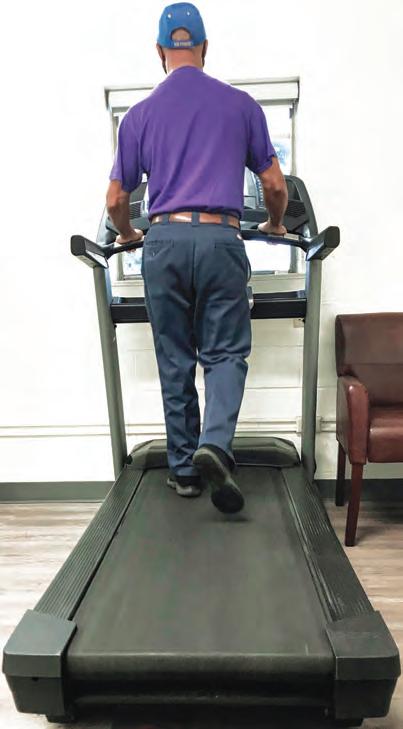



Comprehensive Adult
• Light Adjustable Lens, Odyssey™, Symfony®, PanOptix, Vivity® and the Eyhance IOL
• Management of Dry Eye, Glaucoma & Corneal Disease
• Eyelid Surgery & Botox® • Laser Vision Correction, EVO ICL™



locations to serve you in Allen, Arlington, Dallas, Frisco, McKinney, Mesquite, North Fort Worth, Plano, Richardson, and Rockwall.








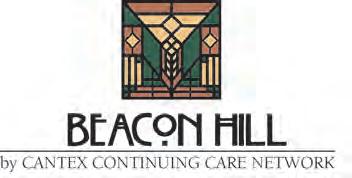


Charles E.
Cyrus Abbaschian, MD
Donald W. Hohman, MD
J. Stephen Appleton, MD
Alexander S. Greenstein, MD
Raj Yalamanchili, MD
Kwame A. Ennin, MD
Samuel K. Stephenson, MD J. Conner Ryan, MD
